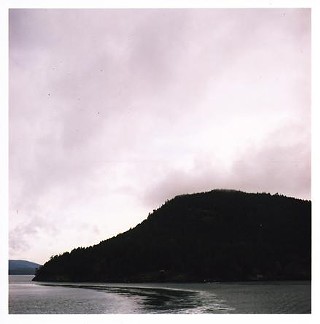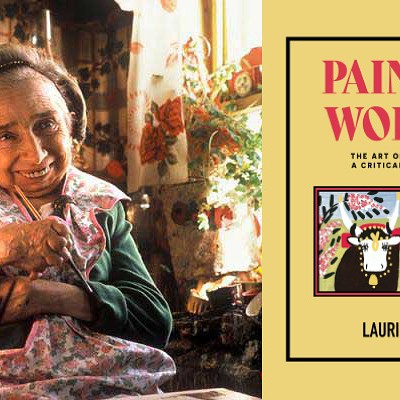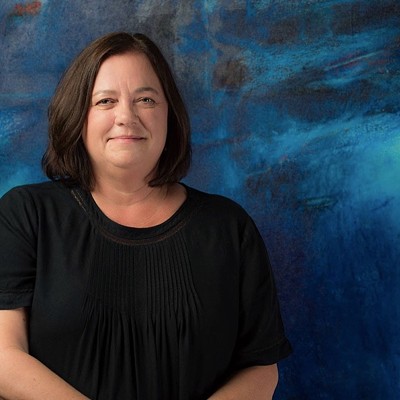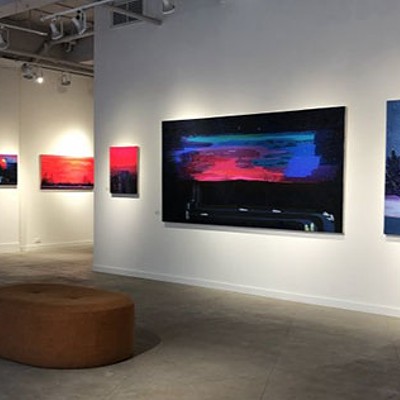Walking into the Khyber building in the fall of 2003, you found offices, a record store, a ceramics studio and a Chinese food restaurant on the second floor. Most of those were legitimate businesses; the restaurant, titled No MSG at Friendship Dinner, was an installation by artist Karen Tam, recreating a typical Chinese-Canadian diner of the mid-20th century. Returning to Halifax, Tam's current project is transforming part of Mount Saint Vincent University Art Gallery into an opium den, as part of the larger exhibition Oriental Ornamental.
Pagoda Pads: Opium Den is part of a larger body of work where Tam creates interior spaces inspired by traditional Chinese interiors and western conceptions of Asian cultures and aesthetics. She calls her installation a "mythical" opium den. "It's a Chinese space that's recreated in the west for a western audience," she says.
Tam holds up a page from the Tintin book The Blue Lotus. The book is among several pop culture references she cites as the inspiration for the Pagoda Pads series. At home in Quebec for Christmas, she was watching reruns of 1980s French cartoons and noticing the depictions of Asian characters in shows like the Belgian Lucky Luke, Tintin and Asterix and Obelix. But the series also draws from home-decorating shows---the title was inspired by MTV's Cribs and the absurdity of home decor TV in general.
Her work approaches the ideas of our cultural perceptions with humour, but still confronts the racism that's fuelled wider western viewpoints through history, and still pervades them in a more subtle manner. She mixes Japanese, Chinese and Korean artifacts, playing with the idea that people can't distinguish between Asian cultures, though hopes a few viewers notice. Lanterns and a dragon figurine from Winners still bear their price tags. Bottles of Yves Saint Laurent Opium perfume complete the look.
Tam has exhibited widely across Canada, and at venues in the US and Europe as well. She was born and raised in Montreal, where her parents ran a Chinese restaurant, and is currently living in London, England, completing a PhD in cultural studies at Goldsmiths. Her exhibitions are different each time she installs: Tam relies on a combination of her own materials and whatever furniture, artifacts and decorations can be found at the venue and local discount or second-hand stores. The restaurant exhibitions grew out of the family business, but she says she has no known family connection to opium dens. "In a way I wish I did!" Tam says.
Watching viewer reactions and hearing stories is important to the artist. "When I showed Pagoda Pads in New York, there was this one woman pointing at a piece saying, 'That would look great in my living room,'" she says. It's not exactly the intended reaction, but it's another level of interpretation.
Tam doesn't notice a huge difference in viewer reactions between installing in smaller centres with few Asian immigrants and bigger cities like Montreal or Toronto. "Most of the time the [gallery-going] audience isn't made up of a lot of Chinese or Asian viewers," she says. "I think it would be very different showing it, say, in China, where they don't necessarily know the history of North American Chinese culture."
She wants people to lounge on the cushions of the den and use the space. "As a viewer I really enjoy getting to interact with a piece," she says. And if viewers wanted to smoke opium? "That would be fantastic!"














